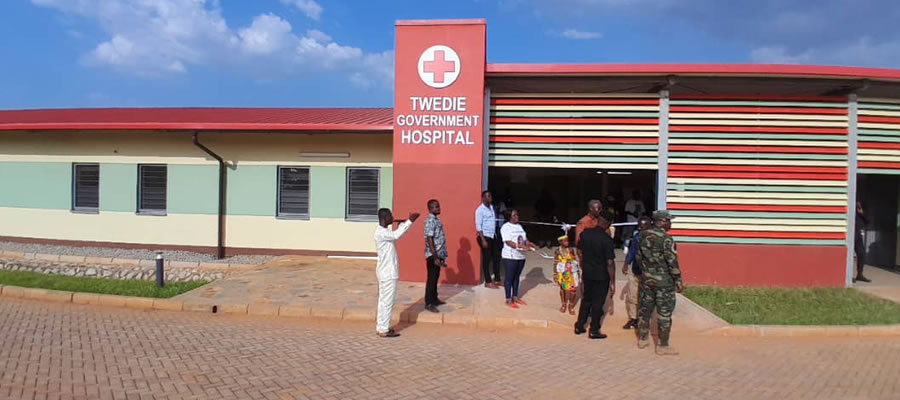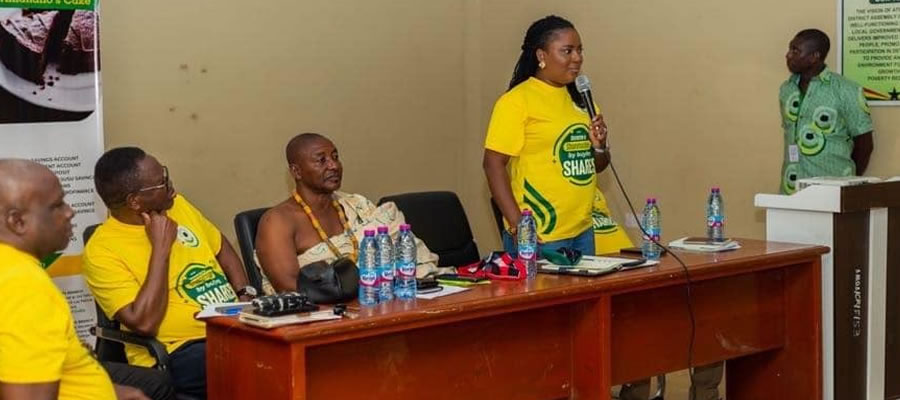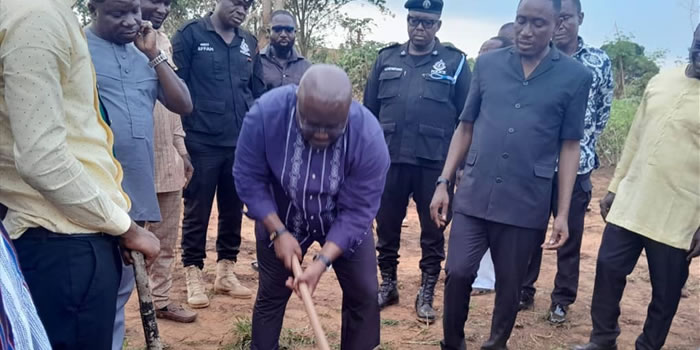

Location and Size
The District is located in the central portion of Ashanti Region, bounded to the North by Kwadaso Municipal, East by Bosomtwe District,West by Atwima Nwabiagya Municipal and South West by Amansie West District.
The District has a total land size of 251.9 sq. km constituting 1.03% of the total land area of Ashanti region (24,389sq.km.). The District Capital, Atwima Twedie is approximately 18 kilometres from Kumasi.
Other major settlements in the district include Ahenema Kokoben, Trede, Twedie, Trabuom, Nweneso No.1, Nweneso No.2, Nweneso No.3, Atwima Boko, Foase, Brofoyeduro, Ampayoo, Krofrom, Kotwi, Kwanwoma, Aburaso, Kromoase, Yabi, Jeche, Adumasa, Akyeremade, Bekwaimi, Aboabo Kesse, Asaago, Winsa, Ampabame no.1, Ampabame no.2, Konkori Ejuampong, Mpatsasie, Bebu, Afrancho, Chichibon, Apimanim, Kokoben .
There are sixty four (64) settlements in the district which have been delineated into two (2) Area Councils and subdivided into 33 Electoral Areas for the purpose of District Assembly elections and controlled under one (1) Parliamentary Constituency.
Relief and Drainage
The District forms part of the Ashanti Plateau. The topography is general undulating; there is no prominent feature with a height of about 200 feet above sea level.
The drainage pattern of the district is dendritic. Rivers Nwene, Oda, Dwahyem, Aboabo, Danyame, Fakomaye, Dwanyen, Kankamayem and its tributaries drain the District. The persistent clearing of the catchment areas of these rivers and streams for farming purpose has adversely affected their level of flow /volume. They have virtually become seasonal in nature. During the dry season when the rivers and streams dry up, the communities that rely on these rivers for their water supply face acute water shortage. The situation is further compounded by the climate change with its prolonged dry periods and excessive heat.
If the sheds of these rivers are managed adequately through planting of tree along their banks, the rivers provide potential source of water for irrigation especially during the dry season.
The District has six main soil types that are described as follows:
• Soil developed over granite and associated rocks
• Kumasi – Offin Compound Association
• Bommon –Offin Compound Association Soil developed over the upper and lower Birimian Rocks
• Bekwai – Oda Compound Association
• Bekai – Akomadan – Oda Compound Association
• Kobeda – Bechem – Sebenso –Oda Compound
• Atukrom – Asikuma Association
The Kumasi –Offin and Bosom –Offin Compound Association have similar characteristics. They are well drained and made of quartz gravels and iron – stone nodules in the sub-soil. They are mostly found in the western and the middle -belt of the district respectively. They support both cash and food crops such as coffee, cocoa, oil palm, citrus, vegetables, maize just to mention a few.
The Bekwai –Oda, Bekwai – Akomadan – Oda and Kobeda –Bechem – Sebenso –Oda Compound Associatino also have a similar characteristics. The associations are found mostly in the Western, North – Eastern and Eastern parts of the District respectively. These soils are moderately well-drained and support cash crops, legumes and food crops.
The Atukrom –Asikuma Association is well drained in some parts. The soil supports food and tree crops as well as vegetable and sugarcane production. Farming and trading, often in agricultural produce, have crucial roles in peri-urban situations providing income and allowing risk taking ventures. These activities can be usefully supported.
The soil types in the District have been found to be ideal for the cultivation of cash crops and indigenous food developed over a wide range of highly weathered parent materials including granite, Tarkwanian and Birimain rocks. They are richly supplied with nutrients.
The soil in the District support different kinds of crops. There is therefore a potential for investment in agriculture, the mainstay of District’s economy.
Geology and Minerals
The District is endowed with a number of resources, which are potentials for development. Some of these resource potentials are tapped whilst others are not. The resources include gold, rock, sand, stone, clay deposits and forest resources.
Gold deposits are located in Adwuampong, Ampabame No. 1, Ahenema Kokoben, Nkoranza, Trede, Trabuom, Kyekyebon and Aduwamase. The District however, cannot be said to be a mining District sine information gathered was only on specific mining pits that have been abandoned. Sand deposits are located at Konkori, Trabuom, Twedie, Adwumwamase, Dida, Gyeke, Afrancho and Asaago. Stone deposits are located at Mpatasie, Ampabame No. 1 and 2, Kwanwoma, Aboabo Kese and Ahenema Kokoben. Rock deposits on the other hand are located at Ampeyoo, Kokoben and Nwineso No. 1, 2 and 3.
These mineral deposits provide a great potential for social-economic development of the District if they are exploited and managed properly. Jobs could be created for the local people and revenues to be derived from these resources could be used to provide socio-economic infrastructure to quicken the pace of District’s development.
Climate
The climate of the District is wet semi-equatorial type. The mean monthly temperature is about 200C. A maximum temperature of about 280C is recorded in March and April just before the onset of the rainy season. The rainfall pattern consists of two (2) rainy seasons. The major season is usually between March and July with June as the peak period. The minor season is between late September and November.
The mean annual rainfall ranges from 140cm – 170cm. rainfall totals and incidence vary from year to year. The number of rainy days average about 100 – 120 days a year with 75 percent of this occuring during the major season. The months of December through February are virtually dry. The relative humidity is high especially in the rainy season and early mornings. The climate change has actually altered affects farming activities, the major economic activity in the District. This is so because the farming activity in the District, like any other part of Ghana, is climate dependent.
The climate is good for variety of crops as the district experiences double maxima rainfall. This provides great potential for plantations for crops such as citrus, cocoa and palm.
Vegetation
The District lies within the green belt. The over bearing vegetation is moisture laden semidecidous. The typical vegetation is basically determined by rainfall and ground water supplies. The forest is rich in tropical hard woods like Wawa, Esa, Kyenkyen etc.
The original vegetation has been degraded into secondary forest in areas like Trabuom, Hwidem Deikrom and Chichibong. This degraduation is as a result of illegal chain saw activities, bush fires and shortened bush fallow periods because of increased population pressure on the land for farming purpose.
Inspite of the level of degradation of the forest, it still holds some economic potential to aid the District’s development in terms of revenue from timber exports. It is also a source of raw material for wood craft carvers in the district.
Date Created : 11/28/2017 4:11:35 AM












 facebook
facebook
 twitter
twitter
 Youtube
Youtube
 +233 593 831 280
+233 593 831 280 0800 430 430
0800 430 430 GPS: GE-231-4383
GPS: GE-231-4383 info@ghanadistricts.com
info@ghanadistricts.com Box GP1044, Accra, Ghana
Box GP1044, Accra, Ghana